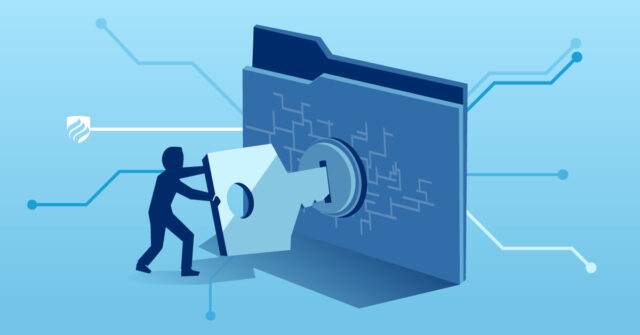Cyber security is a top priority for businesses of all types. The reality is, no one is immune to cyber attacks, no matter how well they protect their physical assets. In fact, the average business will experience at least one attack every two years. That’s why it’s so important to have a plan in place for cyber security. And luckily, there are many ways to measure your progress and determine where you need to focus your efforts. In this blog post, we will walk you through some simple methods for calculating your business’ security budget.
What is Cyber Security?

Cyber security is a huge issue for businesses, as hackers are constantly looking for ways to penetrate systems and steal data. There are a number of different cyber security services available, and it can be a challenge to decide which ones are the best for your business. Here are some factors to consider when deciding how much money to spend on it:
- The severity of the threat: A small business with few assets might not need as much protection as a large business with many assets.
- The complexity of the security solution: If your organization has multiple systems that need to be protected, you will need a more complex solution than if all the systems are isolated.
- The size of the budget: A small business can often save money by using less complex solutions, while a larger business might want to invest in more complex protections.
- The corporation’s overall strategy: A company that is not taking measures to protect its data could find itself at a disadvantage in the future when competitors do invest in better cyber security.
The Different Types of Cyber Threats
Cyber threats are real and they’re growing more sophisticated all the time. Businesses of all sizes need to have a plan in place to protect themselves from these attacks. There are many different types of them, so it’s important to understand what your business is vulnerable to before you can begin to budget for security.
Here are some of the most common types of cyber threats:
- Cyber espionage: A criminal group tries to steal information or intellectual property from another company by infiltrating their networks and stealing data.
- Cyber attacks: Criminals attempt to damage or disable a business’ computer systems through viruses, worms, and other malicious software.
- Cyber fraud: Thieves use online schemes such as phishing emails or fake online reviews to steal personal information or money from unsuspecting customers.
- Mobile malware: Malicious apps—or code that crashes and steals data when installed on a device—are on the rise, especially on Android devices.
- Social engineering: Hackers use tricks such as phony emails or website addresses designed to look like they come from trusted sources in order to dupe people into giving away their personal information.
How Much Should Your Business Spend on Cyber Security?

According to the National Institute of Standards and Technology, businesses should expect to spend approximately 10% of their annual budget. That figure will likely increase in the years ahead as cybercrime becomes more prevalent and sophisticated.
There are a number of ways to fund your cyber security efforts. You can allocate money to hire a professional security consultant, purchase software that integrates with your existing security system, or set up guidelines for employees on how best to protect themselves online. Whichever route you choose, make sure you have a clear strategy and regularly review your progress to ensure you’re getting the most benefit from your investment.
How Can Your Business Reduce the Risk of Cyber Attacks?
There is no one answer to this question as the amount of money your business should spend on cyber security will vary depending on the size and complexity of your organization, the nature of your business, and the level of threat you are facing. However, there are some general tips that all businesses can follow to reduce their risk of cyber attacks.
- Invest in a comprehensive cyber security strategy. This involves investing in tools and technology that can help identify and prevent cyber attacks before they happen, as well as respond quickly if an attack does occur. This may include implementing anti-virus software, hiring a specialist to keep up with current malware threats, installing firewalls and intrusion detection systems (IDS), and setting up secure communication channels between different parts of your business.
- Establish clear policies and procedures for reporting cyber attacks. It is important to have a process in place for employees to report any incidents or suspicious activity related to online security. This way you can identify potential threats early and take action before damage is done.

Source: linkedin.com - Educate yourself about online safety hazards. One of the best ways to protect yourself from online safety hazards is to learn more about them. educate yourself by reading articles, watching videos, or attending training sessions on these topics: how to avoid clicking on unsolicited links, how hackers gain access to private information through digital breaches, protecting against phishing scams, what social media privacy settings you should use, how data Breach Notification Laws (or “Data Breach Laws”) work in the United States, and more.
- Don’t rely solely on security software to protect your business. Cyber security is a complex problem that requires a comprehensive approach including prevention, detection, response, and recovery. Security software can help you detect and mitigate cyber attacks, but it cannot replace the need for a comprehensive strategy and plan.
Wrapping up
Cyber security is one of the top priorities for businesses today, and with good reason. A successful business depends on its digital infrastructure, and a compromised system can quickly cripple operations. That’s why it’s important to invest in cyber security measures from the start – not only will this protect your business from potential attacks, but it’ll also give you a headstart on future threats. When making your investment decisions, be sure to take into account how much cyber security costs vary depending on the size and complexity of your organization.





